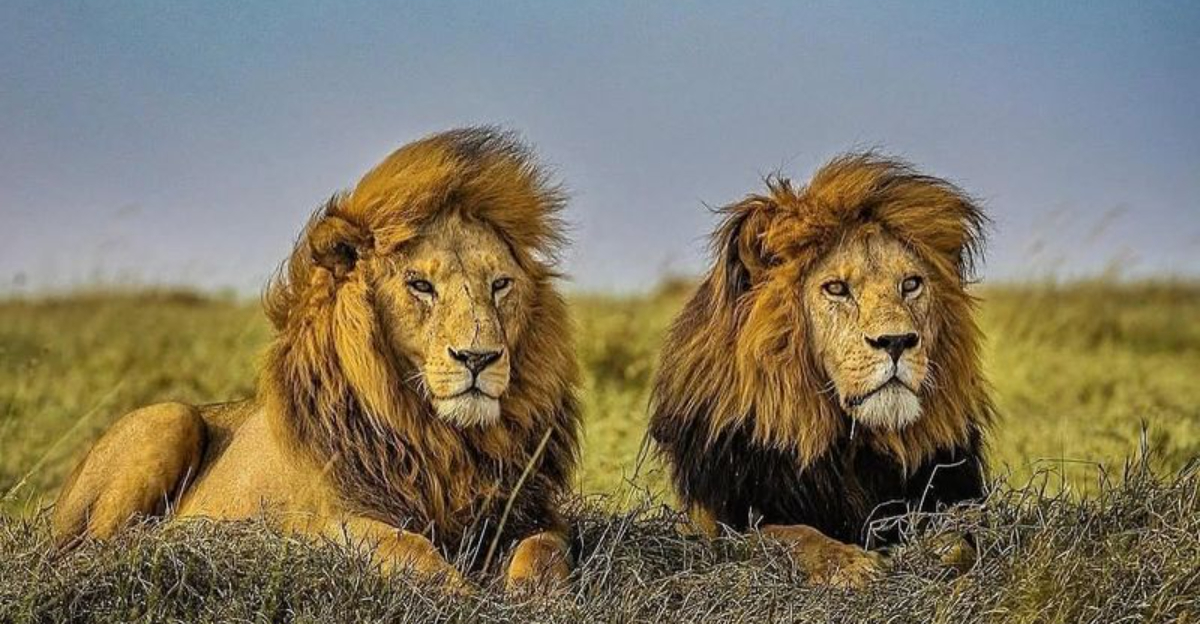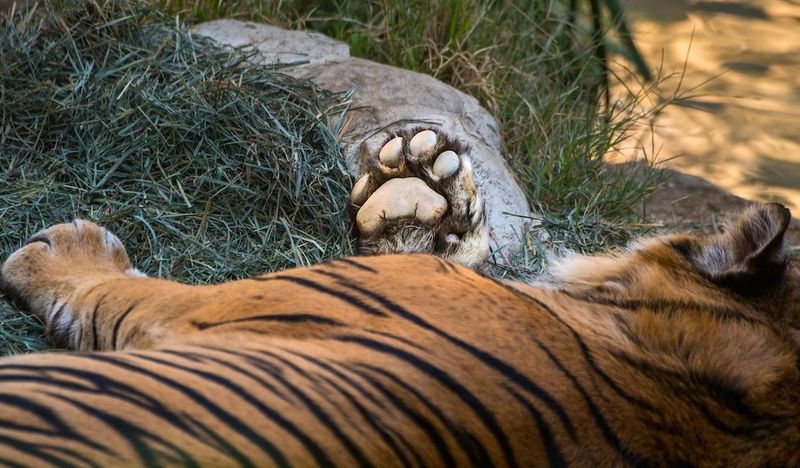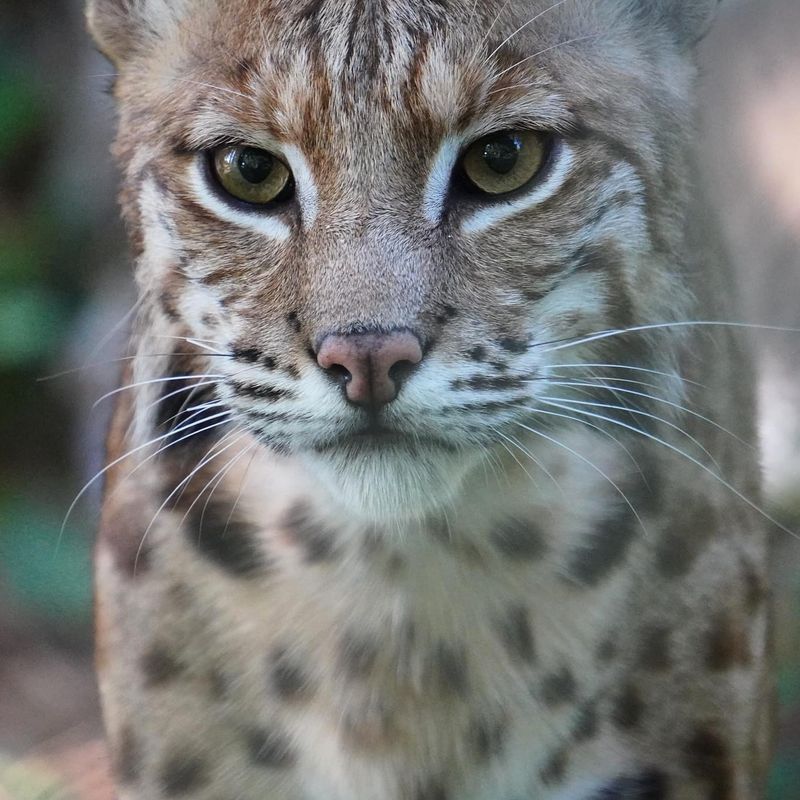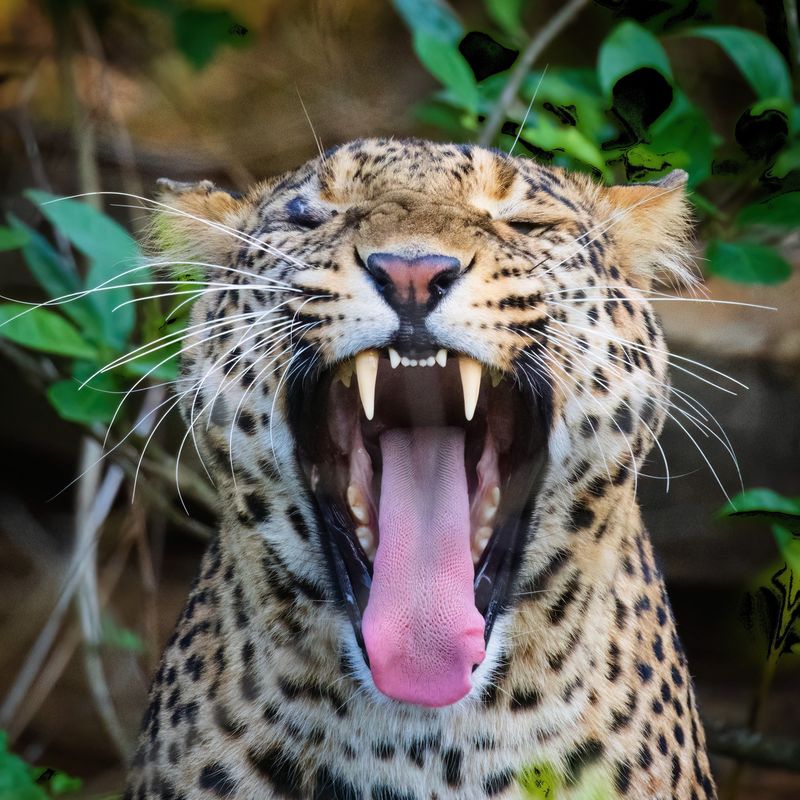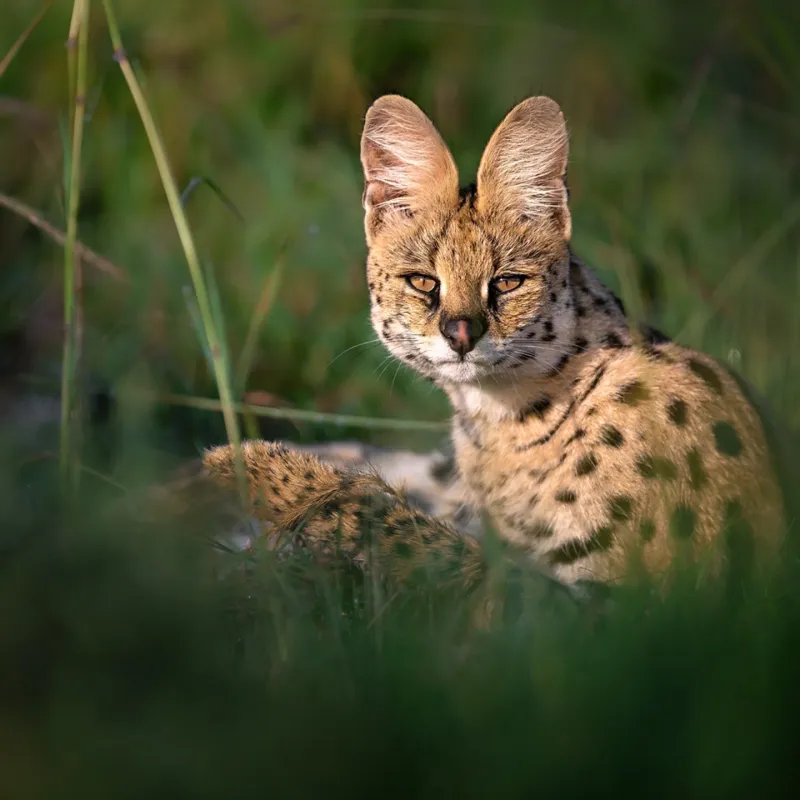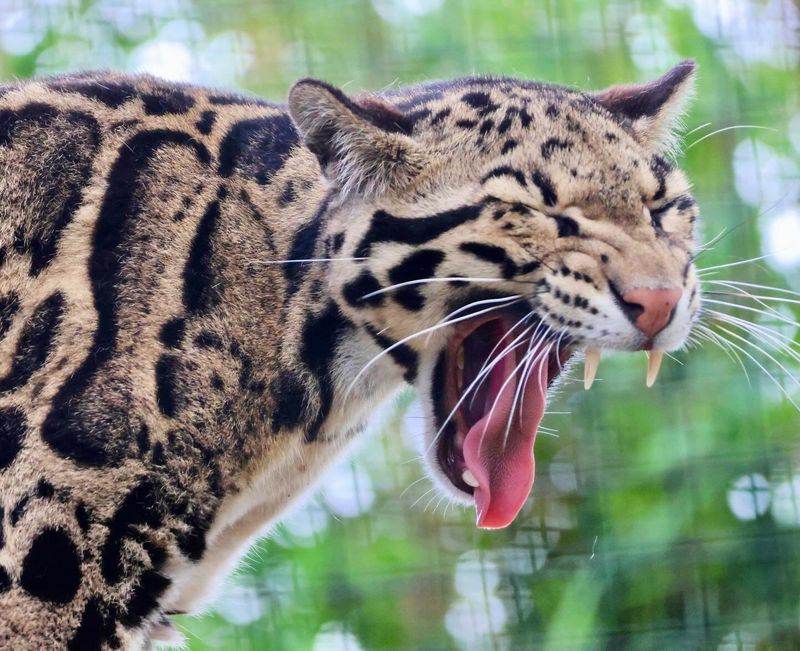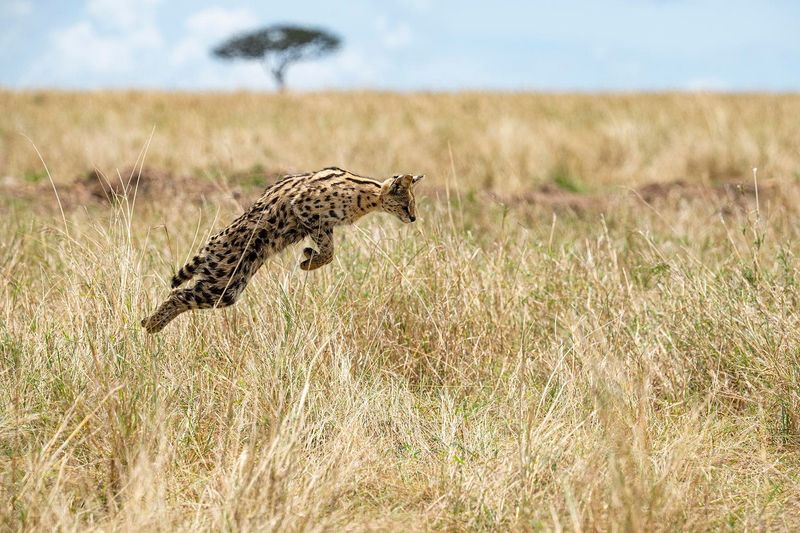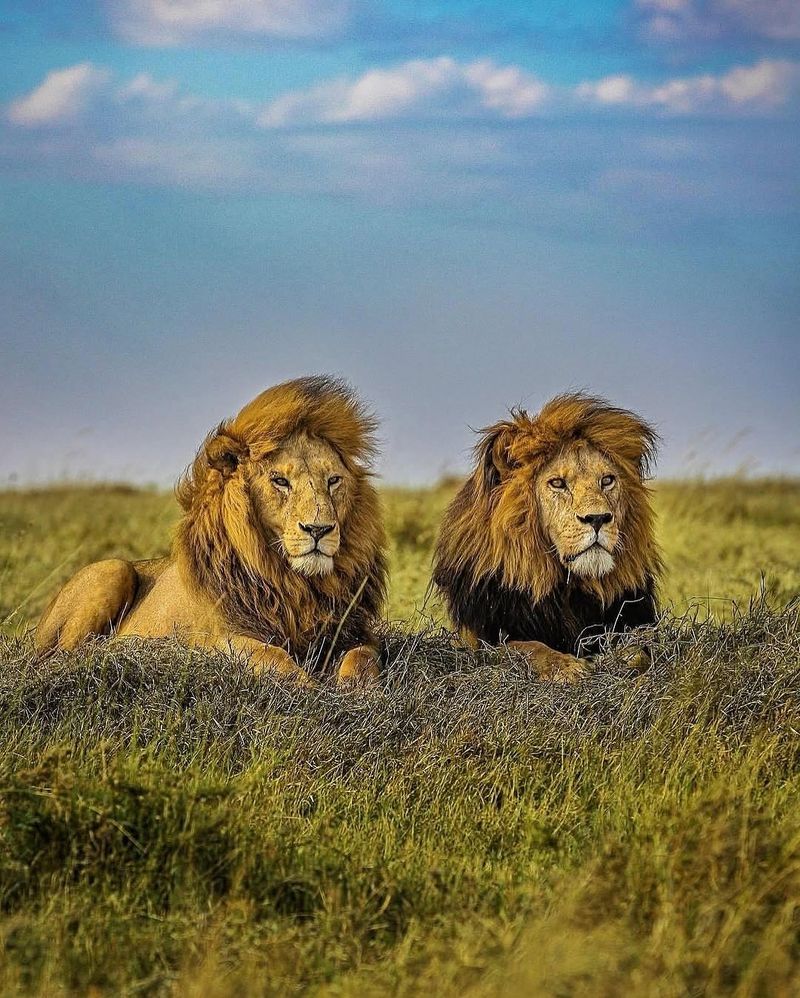📖 Table of Content:
- 1. Silent Stalkers With Specialized Paw Pads
- 2. Incredible Night Vision Superiority
- 3. Whiskers That Function As Precision Tools
- 4. Lightning-Fast Reflexes Beat Olympic Sprinters
- 5. Jaw Strength That Crushes Bones
- 6. Perfect Balance Through Rotating Ears
- 7. Hypnotic Tail Movement Mesmerizes Prey
- 8. Specialized Teeth Designed For Hunting
- 9. Mathematical Precision In Jumping Calculations
- 10. Synchronized Hunting Strategies Among Lions
Wild cats are nature’s perfect predators, displaying hunting abilities that have evolved over millions of years. From the mighty tiger to the nimble ocelot, these feline hunters use a combination of stealth, speed, and strength that makes them top carnivores in ecosystems worldwide.
Their specialized adaptations and hunting techniques demonstrate remarkable intelligence and physical prowess that few other predators can match.
1. Silent Stalkers With Specialized Paw Pads
Cats can move without making a sound thanks to specialized paw pads that contain fatty tissue. This natural sound-dampening system allows them to place each paw precisely on the ground without alerting prey.
Most wild cats also keep their claws retracted while walking, further reducing noise. The soft pads provide excellent shock absorption, enabling cats to move swiftly across various terrains.
This silent approach is crucial for hunting success, as many prey animals have highly sensitive hearing. A study of hunting leopards showed they maintain complete silence until within 20 feet of their target.
2. Incredible Night Vision Superiority
A wild cat’s eyes contain up to six times more rod cells than human eyes, allowing them to see in light levels six times dimmer than what we require. Behind their retinas, a reflective layer called the tapetum lucidum bounces light back through the eye for a second chance at detection.
This adaptation gives cats that distinctive eye shine and provides a significant hunting advantage during dawn and dusk when many prey animals are active. Their pupils can dilate enormously, covering almost the entire visible eye in darkness.
This superior night vision enables cats to hunt effectively when other predators might struggle to see.
3. Whiskers That Function As Precision Tools
Wild cats possess incredibly sensitive whiskers (vibrissae) that act as sophisticated measurement tools. Each whisker connects to a nerve-rich follicle that sends detailed tactile information directly to the brain.
When hunting in tight spaces or complete darkness, cats use their whiskers to determine if their body can fit through openings. The whiskers also detect subtle air movements, helping cats track prey even when they can’t see it.
Remarkably, whiskers can sense an object’s texture, size, and distance without direct contact. This gives cats a three-dimensional awareness of their surroundings that complements their other hunting senses.
4. Lightning-Fast Reflexes Beat Olympic Sprinters
The cheetah can accelerate from 0 to 60 mph in just three seconds—faster than many sports cars. This incredible burst of speed comes from specialized muscles, an enlarged heart, and wide nasal passages that maximize oxygen intake during sprints.
Beyond raw speed, all wild cats possess neural pathways that process visual information significantly faster than humans. Their brains register movement in milliseconds, allowing for split-second hunting decisions.
A study measuring feline reaction time found that cats can process visual information and initiate muscle response in as little as 20 milliseconds, roughly five times faster than the average human reaction time.
5. Jaw Strength That Crushes Bones
The jaguar possesses the strongest bite force relative to body size among all wild cats. Unlike other big cats that typically kill by suffocating prey with a throat bite, jaguars often deliver a skull-piercing bite directly through the temporal bones of their prey.
This extraordinary jaw power allows jaguars to crack turtle shells and crush caiman skulls. Their specialized teeth and jaw muscles generate a bite force measured at over 1,500 pounds per square inch—strong enough to puncture the armored skin of reptiles.
Even smaller wild cats have proportionally powerful bites that enable them to sever the spinal cords of prey much larger than themselves.
6. Perfect Balance Through Rotating Ears
Wild cats possess remarkable ear mobility with 32 muscles controlling each ear independently. They can rotate their ears 180 degrees and move them separately to pinpoint sounds from different directions simultaneously.
This directional hearing helps cats triangulate prey location with extraordinary precision. Studies show cats can detect the difference between sounds just three inches apart from 3 feet away.
When hunting, this ear mobility combines with their vestibular system—an inner ear mechanism that maintains balance during complex movements. This allows cats to perform mid-air rotations while pouncing and still land precisely on target, regardless of how they began their leap.
7. Hypnotic Tail Movement Mesmerizes Prey
Several wild cat species use their tails as hunting tools to lure curious prey within striking distance. The African wildcat and serval will wiggle their tail tips in a motion that mimics the movement of insects or small rodents.
This behavior, called caudal luring, exploits the natural curiosity of prey animals. When the unsuspecting victim approaches to investigate the movement, the cat strikes with lightning speed.
Even more fascinating, researchers have observed that cats adjust their tail movements based on which prey species they’re targeting. Different rhythms and patterns are used to attract birds versus rodents, showing remarkable hunting intelligence.
8. Specialized Teeth Designed For Hunting
Wild cats possess specialized carnassial teeth—modified molars with sharp, blade-like edges that work like scissors to slice through meat and tendons. These teeth allow cats to process meat efficiently, minimizing energy expenditure during feeding.
Their iconic canine teeth serve a different but equally crucial function. Perfectly positioned and proportioned, these teeth create a precise gap that aligns exactly with the vertebrae spacing of their common prey species.
9. Mathematical Precision In Jumping Calculations
Wild cats perform complex physics calculations instinctively before each jump. They assess distance, height, and landing surface in a split second, then calculate the exact muscle force needed for a perfect leap.
A hunting cat can jump up to seven times its body length horizontally and up to three times its height vertically. The margay, a small South American wild cat, can even jump between trees while carrying prey in its mouth.
Most impressively, high-speed camera studies reveal that cats calculate their jumps with a margin of error of less than 2%. This mathematical precision allows them to conserve energy while hunting—a crucial survival advantage in the wild.
10. Synchronized Hunting Strategies Among Lions
Female lions display remarkable teamwork when hunting, using sophisticated coordinated strategies that researchers compare to military tactical operations. During group hunts, lionesses assume specific roles—some act as “wings” to flank prey, while others become “centers” that drive prey toward an ambush.
Studies of hunting prides reveal they communicate through subtle body language and vocalizations inaudible to humans. Each lioness remembers her role from previous hunts and adjusts based on terrain and prey behavior.
This synchronized hunting allows lions to take down animals that can weigh up to ten times more than an individual lioness. Their success rate increases from 15% when hunting alone to over 30% when hunting as a coordinated group.
